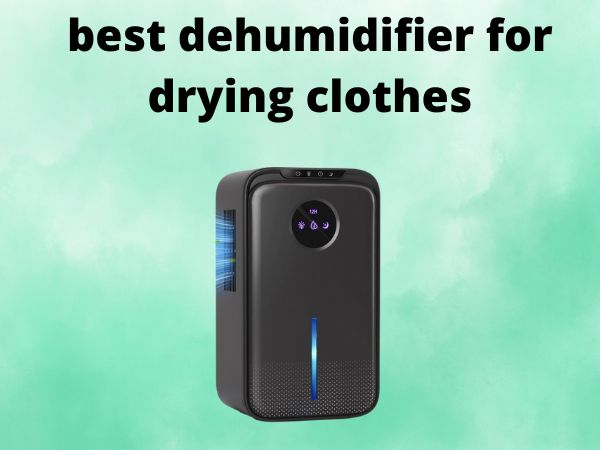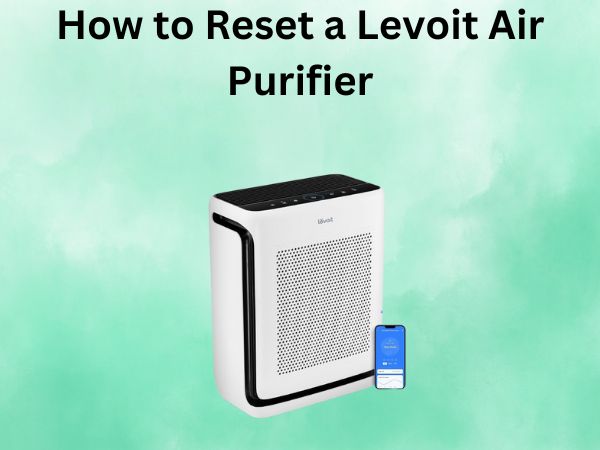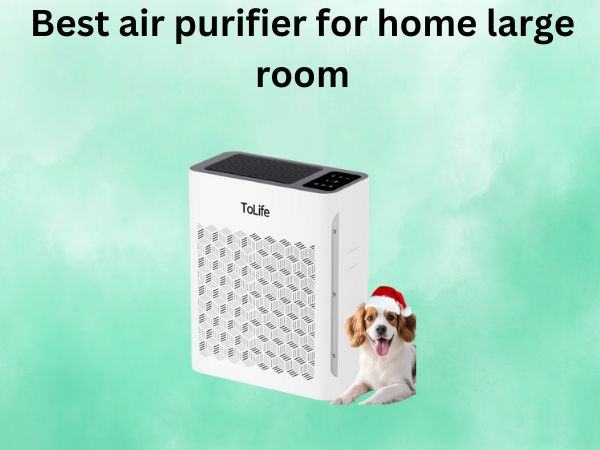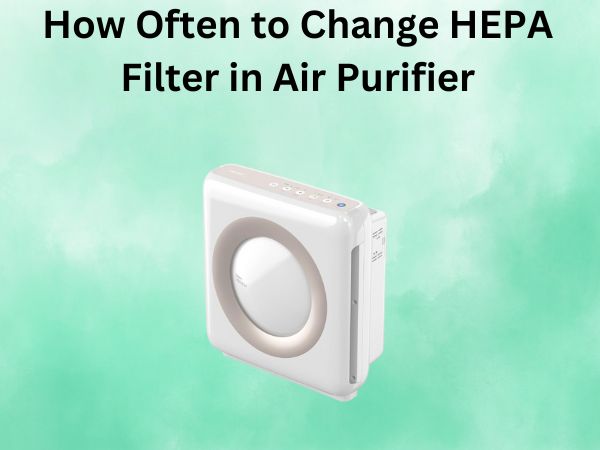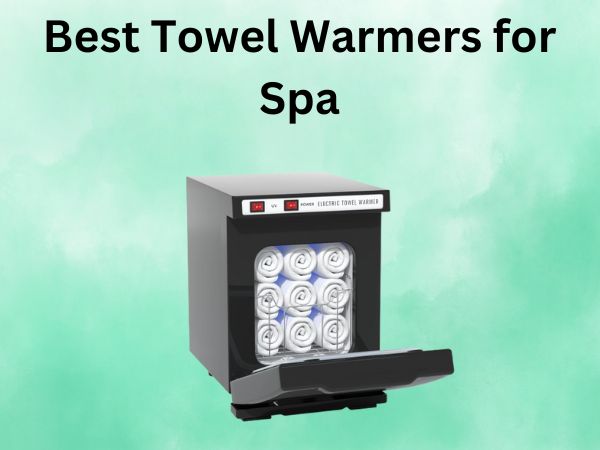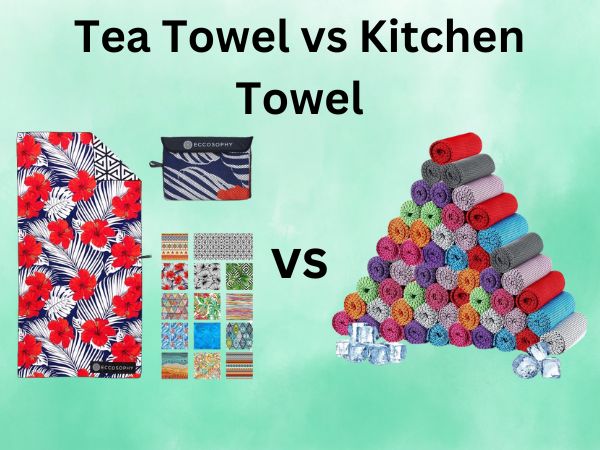5 Best Dehumidifiers for Drying Clothes [In 2026]
Are you tired of waiting endlessly for your clothes to dry indoors? Whether you’re dealing with rainy weather, limited outdoor space, or simply prefer indoor drying, a good dehumidifier can revolutionize your laundry routine. In this comprehensive guide, I’ll walk you through the top 5 dehumidifiers specifically effective for drying clothes, saving you time, energy, and potentially even extending the lifespan of your favorite garments.
Living in a humid environment can make air-drying clothes a frustrating experience. Clothes can develop that dreaded musty smell, take days to fully dry, or even promote mold growth in your home. This is where a quality dehumidifier steps in as your laundry day hero. Let’s dive into the world of clothes-drying dehumidifiers and find the perfect match for your home.
Table of Contents
Top 5 Dehumidifiers for Drying Clothes
After extensive research and analysis of user experiences, these five dehumidifiers stand out as exceptional options for accelerating indoor clothes drying while offering outstanding overall performance.
Haraye 2.7L Home Dehumidifier: Best Overall for Clothes Drying
The Haraye 2.7L model earns our top spot by striking the perfect balance between capacity, performance, and user-friendly features specifically beneficial for laundry drying.
Key Specifications
- Water tank capacity: 2.7 liters (about 91 oz)
- Coverage area: 25 square feet focus area (optimal for clothes drying spaces)
- Special features: Timer, sleep mode, auto shut-off, defrost function, drain hose option
- Dimensions: 6″D x 7.98″W x 12″H
- Noise level: Whisper-quiet operation, ideal for overnight drying
Pros and Cons
Pros:
- Generous 2.7L tank requires less frequent emptying during laundry sessions
- Included drain hose for continuous drainage option eliminates tank maintenance
- Exceptionally quiet operation won’t disturb household activities
- Timer function allows precise control over drying sessions
- Auto-defrost function prevents ice buildup in cooler environments
- Compact footprint fits easily in laundry rooms, bathrooms, or utility spaces
- Responsive touch controls for simple operation
Cons:
- Smaller coverage area makes it less suitable for very large rooms
- Higher initial price point compared to basic models
- Some users report the tank can be slightly challenging to reinsert properly
- Limited color options (primarily available in black)
What real users love most about the Haraye dehumidifier is its virtually silent operation. One customer mentioned plugging it in the corner of their bedroom and being able to sleep undisturbed while still waking up to find a tank with collected moisture. This makes it perfect for overnight clothes drying without disrupting your sleep.
The drain hose compatibility is another standout feature for laundry applications, as wet clothes can release significant moisture that would quickly fill smaller tanks. The ability to direct water straight to a drain provides uninterrupted operation even with multiple loads of laundry.
YeeCopon 85 OZ Dehumidifier: Best with Colorful LED Lighting
The YeeCopon dehumidifier combines effective moisture removal with aesthetic appeal, making it an excellent choice for visible areas where you might dry clothes.
Key Specifications
- Water tank capacity: 85 fluid ounces (approximately 2.5 liters)
- Coverage area: 500 square feet
- Special features: 7 color LED lighting, automatic shutoff, 3 speed settings
- Dimensions: 5.7″D x 7.9″W x 13.58″H
- Operation modes: Sleep, normal, and high-speed options
Pros and Cons
Pros:
- Attractive 7-color LED lighting adds ambiance while drying clothes
- Three distinct speed settings including a dedicated “high-speed mode” for faster clothes drying
- Impressive 500 sq ft coverage area handles larger spaces efficiently
- Nearly silent operation in sleep mode (<30dB)
- Versatile enough for various locations (bedroom, bathroom, kitchen, office)
- Lightweight and portable design makes it easy to move between rooms
Cons:
- Slightly smaller tank capacity than our top pick
- Some users report slower moisture collection than advertised
- No built-in humidity display to monitor levels
- Drain hose functionality is limited compared to premium models
The YeeCopon’s standout feature is undoubtedly its customizable lighting system, which serves both functional and decorative purposes. You can switch between seven different colors to complement your decor or even use it as a night light while it works on drying your clothes.
Users particularly appreciate the dedicated high-speed mode designed specifically for accelerating the clothes drying process. This feature creates stronger airflow that significantly cuts down drying time for laundry while still maintaining relatively quiet operation compared to traditional dryers.
ALORAIR LGR Commercial Dehumidifier: Best Heavy-Duty Option
For households with substantial laundry needs or professional settings, the ALORAIR LGR Commercial Dehumidifier delivers industrial-strength performance that handles even the largest drying tasks.
Key Specifications
- Moisture removal: Up to 180 PPD (pints per day) at saturation, 85 PPD at AHAM
- Coverage area: Up to 2,300 square feet
- Special features: Built-in pump, automatic defrost, memory starting
- Dimensions: 22.8″D x 13.7″W x 17.3″H
- Weight: 64.3 pounds
- Warranty: 5-year limited warranty
Pros and Cons
Pros:
- Industrial-grade performance dramatically accelerates clothes drying
- Built-in pump with 19.6 ft drain hose eliminates manual water removal
- Powerful 210 CFM airflow maximizes drying efficiency for multiple loads
- Automatic defrost feature ensures consistent operation in varied temperatures
- Memory starting feature resumes operation after power outages
- Exceptional 5-year warranty for long-term reliability
- Digital display shows precise performance metrics
Cons:
- Significantly higher price point than residential models
- Larger footprint requires more dedicated space
- Heavier weight (64.3 lbs) reduces portability
- May be overkill for smaller households or occasional laundry needs
- Operation noise is higher than compact models (though many users still find it surprisingly quiet for its capacity)
The ALORAIR stands apart for its professional-grade construction and performance. HVAC technicians have specifically praised its engineering quality, comparing it favorably to commercial refrigeration equipment. For large families, communal laundry areas, or anyone regularly drying multiple loads of laundry indoors, this powerhouse delivers transformative results.
What makes this model particularly suitable for dedicated laundry drying is its continuous operation capability. The built-in pump can move water up to 14.7 feet vertically, meaning you can position it optimally for clothes drying without worrying about drain proximity. Users report dramatic improvements in drying times, with some noting their basement areas feel both drier and 5-10 degrees cooler after installation.
UBBO 95oz Dehumidifier: Best Multi-Function Option
The UBBO 95oz dehumidifier offers a unique combination of effective moisture removal, aromatherapy capabilities, and air filtration, creating an ideal environment for both drying clothes and improving overall air quality.
Key Specifications
- Water tank capacity: 95 fluid ounces (approximately 2.8 liters)
- Coverage area: 850 square feet
- Special features: Drain hose, timer, sleep mode, auto-off, 7 colors light, aroma box, washable filter
- Dimensions: 5.5″D x 9″W x 13″H
- Speed settings: 2 speeds plus sleep mode
- Moisture removal: Up to 1.2L per day (at 86°F, 80% RH)
Pros and Cons
Pros:
- Dual semiconductor condensers offer nearly twice the efficiency of standard models
- Built-in filter and aromatherapy box improves air quality while drying clothes
- Convenient timer function with 8h/16h/24h options for customized drying cycles
- Ultra-quiet sleep mode (35dB) allows for overnight operation
- Drain hose option eliminates the need for manual tank emptying
- Attractive design with black gold finish and optional mood lighting
- Excellent coverage area of 850 sq ft works for open floor plans
Cons:
- Premium price point compared to basic models
- Some users report the water tank could have a better design for emptying
- Limited to two speed settings (plus sleep mode)
- Filter requires regular cleaning for optimal performance
- Aromatherapy feature requires purchasing essential oils separately
The UBBO distinguishes itself with its dual semiconductor condensers, which significantly boost efficiency compared to single-condenser models. This technology makes it particularly effective for clothes drying, as it can extract moisture more quickly and consistently even in larger spaces.
What users consistently praise is the complete package of features beyond basic dehumidification. The combination of adjustable mood lighting, aromatherapy capabilities, and air filtration creates a pleasant environment around your drying clothes, eliminating the typical “wet laundry” smell that can permeate indoor spaces.
The timer function deserves special mention for laundry applications, as it allows you to perfectly match the dehumidifier’s run time to your clothes drying needs, saving energy while ensuring optimal results.
TABYIK 35 OZ Compact Dehumidifier: Best Budget Option
For smaller spaces, occasional use, or those on a tight budget, the TABYIK 35 OZ offers impressive performance in a compact, affordable package.
Key Specifications
- Water tank capacity: 35 ounces (approximately 1 liter)
- Coverage area: 280 square feet
- Special features: Auto shut-off, colorful light, ultra-quiet operation
- Dimensions: 5.9″D x 5.9″W x 10.1″H
- Weight: Just 2.19 pounds
- Noise level: 28dB (whisper quiet)
- Moisture removal: Up to 16oz (450ml) per day (at 86°F, 80% RH)
Pros and Cons
Pros:
- Most affordable option in our lineup without sacrificing essential features
- Extremely portable at just 2.19 pounds with built-in handle
- Ultra-quiet operation at just 28dB won’t disturb any activities
- Low energy consumption (less than 1 kilowatt-hour per day)
- Attractive 7-color lighting system with separate control button
- Perfect size for bathrooms, small bedrooms, or closet areas
- Transparent tank allows real-time monitoring of water collection
Cons:
- Smaller tank capacity requires more frequent emptying
- Limited to 280 sq ft coverage area
- No drainage hose option for continuous operation
- Lower daily moisture removal rate than larger models
- No timer function or multiple speed settings
- Not suitable for larger loads of laundry
The TABYIK excels in situations where space and budget are primary concerns. Its incredibly compact footprint (5.9″ × 5.9″) allows it to fit in tight spaces near drying racks or clotheslines, while still providing noticeable improvements in drying time.
What makes this model particularly appealing for apartment dwellers or those in smaller homes is its remarkable energy efficiency. Using less than 1 kilowatt-hour daily, it’s the most economical option for regular use, costing mere pennies to operate while still cutting clothes drying time significantly.
Users particularly appreciate its portability, allowing them to move it between bathroom, bedroom, and laundry areas as needed. Several reviews mention successfully using it to combat bathroom condensation after showers, then relocating it to help with laundry drying later in the day – versatility that makes its budget-friendly price even more attractive.
Understanding How Dehumidifiers Help with Drying Clothes
Before we explore the best options on the market, it’s important to understand exactly how dehumidifiers assist with drying your laundry more efficiently.
The Science Behind Dehumidification for Laundry
When you hang wet clothes indoors, moisture evaporates into the surrounding air, increasing the room’s humidity. A dehumidifier works by pulling this moisture-laden air through its system, where it passes over refrigerated coils that cause the moisture to condense into water that’s collected in a tank. The drier air is then released back into the room, ready to absorb more moisture from your clothes.
This continuous cycle significantly speeds up the evaporation process from your wet laundry. Instead of that moisture lingering in the air and eventually making its way back into your clothes (slowing the drying process), it’s captured and removed from the equation entirely.
Benefits of Using Dehumidifiers for Clothes Drying
There are numerous advantages to incorporating a dehumidifier into your laundry routine:
- Faster drying times: Clothes typically dry 30-50% faster than in normal indoor conditions
- Energy savings: Uses significantly less electricity than conventional tumble dryers
- Gentler on fabrics: No tumbling or high heat that can damage delicate items
- Reduced indoor humidity: Prevents mold and mildew growth in your home
- Weather independence: No more worrying about rain forecasts or seasonal humidity
- Space efficiency: Many modern units are compact while still being highly effective
- Allergy benefits: Helps remove allergens along with excess moisture
Now that you understand the benefits, let’s examine what features make a dehumidifier particularly effective for drying clothes.
Key Features to Look for in a Clothes Drying Dehumidifier
Not all dehumidifiers are created equal, especially when it comes to drying laundry. Here are the crucial factors to consider before making your purchase.
Water Tank Capacity and Drainage Options
When using a dehumidifier specifically for drying clothes, water tank capacity becomes particularly important. Wet laundry can release a substantial amount of moisture into the air.
A larger tank (2 liters/70 oz or more) means fewer interruptions to empty it during the drying process. Even better are models offering continuous drainage options via a hose, allowing you to direct water straight to a drain or sink without ever needing to empty a tank.
Coverage Area and Moisture Removal Rate
For effective clothes drying, look for a dehumidifier that can handle your laundry room’s square footage with some extra capacity to spare. The moisture removal rate, measured in pints per day (PPD), indicates how much water a unit can extract from the air in a 24-hour period.
For reference:
- Small loads or single items: 20-30 PPD may suffice
- Average family laundry: 40-50 PPD recommended
- Large or multiple loads: 60+ PPD provides optimal performance
Remember that these figures represent maximum extraction under ideal conditions (usually 80°F/60% humidity). Real-world performance may vary, so choosing a model with some extra capacity provides a buffer.
Energy Efficiency and Operating Costs
While helping to save energy compared to tumble dryers, some dehumidifiers are more efficient than others. Look for Energy Star certified models if available, as they consume approximately 15% less energy than standard units.
The energy efficiency ratio (EER) can help you compare models – a higher number indicates better efficiency. For clothes drying purposes, consider the costs of running your unit for several hours at a time, potentially several days per week.
Noise Levels and Sleep Modes
Since you’ll likely be running your dehumidifier for extended periods while clothes dry, noise levels matter. Most manufacturers provide decibel (dB) ratings:
- Below 40 dB: Very quiet, suitable for bedrooms
- 40-50 dB: Moderate, comparable to a quiet conversation
- Above 50 dB: More noticeable, similar to a refrigerator running
Many modern dehumidifiers offer sleep or quiet modes that reduce operational noise, though sometimes at the cost of slightly reduced performance. If your laundry area is near living or sleeping spaces, prioritizing a quieter model makes sense.
Now, let’s dive into our top 5 picks for the best dehumidifiers specifically suited for drying clothes.
How to Maximize Dehumidifier Efficiency for Drying Clothes
Now that we’ve explored the top models, let’s discuss how to get the absolute best performance when using your dehumidifier specifically for drying clothes.
Optimal Placement in Your Laundry Area
Proper placement makes a significant difference in drying efficiency:
- Position centrally: Place your dehumidifier in the center of the room if possible, allowing for maximum air circulation around all hanging items.
- Create a drying zone: If using in a multipurpose room, consider using a folding screen or curtain to create a semi-enclosed drying area with the dehumidifier inside. This concentrates its effect where needed most.
- Ensure adequate clearance: Maintain at least 6-12 inches of space around the unit’s air intake and exhaust to prevent restricted airflow.
- Consider vertical positioning: Since warm air rises, placing your dehumidifier slightly elevated (on a sturdy table or shelf) can sometimes improve performance if your clothes are hanging high.
- Avoid heat sources: Keep your dehumidifier away from radiators, heaters, or direct sunlight, as these can affect its internal temperature sensors and reduce efficiency.
Setting the Right Humidity Levels
For optimal clothes drying, target these humidity ranges:
- 40-45%: Ideal target for fastest drying times
- 45-50%: Good balance between drying efficiency and comfort
- Below 40%: May dry clothes slightly faster but can make the air uncomfortably dry
- Above 50%: Significantly reduces drying efficiency
If your dehumidifier has a humidistat, set it to maintain these optimal levels. For models without built-in humidity control, you might consider a separate hygrometer to monitor room conditions.
Maintenance Tips for Peak Performance
Regular maintenance ensures your dehumidifier continues performing at its best:
- Clean filters regularly: Most models have washable filters that should be rinsed every 2-4 weeks during regular use.
- Check and clean coils: Dust on condenser coils reduces efficiency. Gently vacuum accessible coils every few months.
- Sanitize water tanks: Periodically clean tanks with mild soap and water to prevent mold growth.
- Inspect drain hoses: If using continuous drainage, check hoses for kinks or blockages that could cause backups.
- Test auto shut-off: Periodically verify the automatic shut-off functions properly to prevent overflow situations.
- Seasonal deep cleaning: At least twice yearly, perform a more thorough cleaning following manufacturer directions.
With proper placement, settings, and maintenance, even a modest dehumidifier can significantly accelerate your clothes drying time.
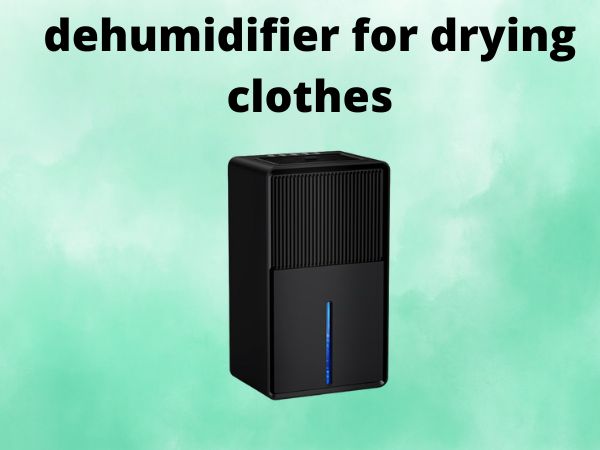
Comparing Our Top 5 Dehumidifiers for Different Home Scenarios
Let’s explore which of our top picks works best in various living situations.
Small Apartments and Limited Spaces
In compact living environments, space efficiency is crucial while still needing effective performance:
- Best option: TABYIK 35 OZ Compact Dehumidifier
- Runner-up: YeeCopon 85 OZ Dehumidifier
The TABYIK’s ultra-compact footprint makes it ideal for apartment living, where every square inch counts. Its quiet operation is particularly valuable in studio apartments or convertible spaces where your sleeping area might be near your laundry drying zone.
For slightly larger apartments with more laundry needs, the YeeCopon offers additional capacity while still maintaining a reasonable footprint. Its attractive design and lighting features make it less of an eyesore in visible areas where you might need to dry clothes.
Large Households with Heavy Laundry Needs
Families with multiple children or households that generate substantial laundry will need more robust solutions:
- Best option: ALORAIR LGR Commercial Dehumidifier
- Runner-up: UBBO 95oz Dehumidifier
The ALORAIR’s commercial-grade performance handles even the most demanding family laundry needs. Its continuous drainage and powerful moisture extraction make it perfect for households washing multiple loads daily. The investment pays dividends in dramatically reduced drying times and eliminated hassle.
For large households on a more moderate budget, the UBBO offers an excellent balance of capacity, coverage area, and features. Its timer functions and dual condensers work efficiently for bigger laundry sessions while still being more affordable than commercial-grade options.
Humid Climate Considerations
Those living in particularly humid regions (coastal areas, tropical climates, or locations with rainy seasons) need dehumidifiers that can handle consistently high moisture levels:
- Best option: Haraye 2.7L Home Dehumidifier
- Runner-up: ALORAIR LGR Commercial Dehumidifier
The Haraye’s auto-defrost function makes it particularly well-suited for high-humidity environments where condensers can ice up during extended operation. Its drain hose compatibility allows for continuous operation without monitoring, essential during extended rainy periods when clothes drying becomes most challenging.
For extreme humidity or larger spaces, the ALORAIR’s commercial-grade performance creates a dramatically drier environment even in the most challenging conditions. Its robust engineering stands up to continuous operation in tough environments that would strain consumer-grade models.
Environmental and Cost Benefits of Using Dehumidifiers Instead of Dryers
Beyond just practical convenience, using dehumidifiers for clothes drying offers significant environmental and financial advantages.
Energy Consumption Comparison
The energy savings of dehumidifier drying versus traditional dryers are substantial:
- Average electric dryer: 3,000-5,000 watts per hour
- Average dehumidifier: 300-700 watts per hour
This translates to approximately 80-90% energy savings per load of laundry. While clothes may take slightly longer to dry completely (typically 4-8 hours versus 30-60 minutes in a dryer), the dramatic reduction in energy usage more than compensates for the longer timeline.
For a family doing 5 loads of laundry weekly, switching to dehumidifier drying could save approximately $150-300 annually on electricity costs alone.
Reducing Carbon Footprint
The environmental impact extends beyond just energy savings:
- Reduced carbon emissions: Using a dehumidifier instead of a dryer can reduce your laundry-related carbon footprint by up to 75%
- Lower resource consumption: Dehumidifiers typically have longer operational lifespans than dryers, reducing manufacturing and disposal impacts
- Water recycling potential: Collected water from dehumidifiers can be reused for plants or cleaning, further reducing environmental impact
For environmentally conscious households, incorporating dehumidifier drying into your laundry routine represents one of the simplest yet most impactful changes you can make to reduce your home’s ecological footprint.
Extending Clothes Lifespan
Perhaps the most overlooked benefit is the significant extension of garment longevity:
- Reduced fabric wear: No mechanical tumbling means less fiber breakdown and fabric thinning
- Eliminated shrinkage: Air drying prevents the heat-induced shrinking common with dryers
- Preserved elasticity: Elastic fibers in clothing maintain their resilience longer without heat exposure
- Retained colors: Less fading and color transfer without high heat
- Decreased lint production: Air drying produces virtually no lint, preserving fabric integrity
Over time, these benefits can substantially extend the usable life of clothing, potentially saving hundreds or even thousands of dollars in replacement costs annually for a typical family. Delicate items, athletic wear with elastic components, and higher-end clothing particularly benefit from this gentler drying approach.
Frequently Asked Questions
How much faster will clothes dry with a dehumidifier compared to normal air drying?
In typical indoor conditions, using a dehumidifier can reduce clothes drying time by 30-50%. A load that might take 24-36 hours to dry completely in a humid environment could dry in 12-18 hours with an appropriately sized dehumidifier running. Factors affecting this include the initial humidity level, room temperature, air circulation, and the dehumidifier’s capacity.
Can I use any dehumidifier for drying clothes, or do I need specific features?
While any dehumidifier will help somewhat, models with higher moisture removal rates, continuous drainage options, and good airflow are significantly more effective for clothes drying. Features like timers, multiple speed settings, and larger water tanks also enhance the clothes drying experience. The five models we’ve highlighted were selected specifically for their effectiveness in laundry applications.
How should I arrange my clothes for fastest drying with a dehumidifier?
For optimal results, hang clothes with some space between items to allow for maximum air circulation. Using a fan in conjunction with your dehumidifier can further improve airflow around garments. Position heavier items (jeans, towels) closest to the dehumidifier if possible, as they take longest to dry. Avoid overcrowding your drying area, as this significantly reduces efficiency.
Is using a dehumidifier for drying clothes more economical than using a dryer?
Yes, significantly so. A typical electric dryer uses 3,000-5,000 watts per hour, while most dehumidifiers use between 300-700 watts per hour. Even accounting for longer running times, dehumidifier drying typically costs 70-90% less in energy consumption. Additionally, clothes dried this way experience less wear and tear, extending their useful life and saving replacement costs.
Can a dehumidifier eliminate the musty smell clothes sometimes get when air-dried indoors?
Absolutely! The musty smell in air-dried clothes primarily comes from slow drying in humid conditions, allowing bacteria to grow on damp fabric. By removing moisture from the air more quickly, dehumidifiers prevent this bacterial growth and the associated odors. Models with additional air purification features, like the UBBO with its aromatherapy function, can further enhance freshness by improving overall air quality while clothes dry.
Conclusion: Finding Your Perfect Clothes Drying Dehumidifier
After thoroughly examining the top options on the market, it’s clear that the ideal dehumidifier for drying clothes depends significantly on your specific needs and circumstances. The Haraye 2.7L model earns our overall top recommendation for its excellent balance of features specifically beneficial for laundry drying, but each model we’ve highlighted excels in particular scenarios.
When making your selection, prioritize:
- Water tank capacity (or drain hose options) for uninterrupted operation
- Coverage area appropriate to your laundry space
- Noise levels compatible with your home environment
- Energy efficiency for long-term operation
- Special features that enhance your particular usage pattern
Remember that even a modestly priced dehumidifier can dramatically improve indoor clothes drying while simultaneously creating a healthier home environment with reduced humidity. The dual benefits make these appliances an excellent investment for any household looking to optimize their laundry routine while potentially saving money and extending the life of their clothing.

